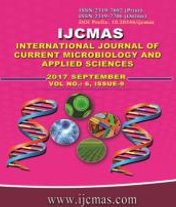


 National Academy of Agricultural Sciences (NAAS)
National Academy of Agricultural Sciences (NAAS)

|
PRINT ISSN : 2319-7692
Online ISSN : 2319-7706 Issues : 12 per year Publisher : Excellent Publishers Email : editorijcmas@gmail.com / submit@ijcmas.com Editor-in-chief: Dr.M.Prakash Index Copernicus ICV 2018: 95.39 NAAS RATING 2020: 5.38 |
Jhum or shifting cultivation, which is widespread in the North East India and some parts of Orissa, Jharkhand and Andhra Pradesh, is a primitive practice of cultivation. It involves clearing vegetative/forest cover on land/slopes of hills, drying and burning it before onset of monsoon and cropping on it thereafter. After harvesting is over, the land is left fallow and vegetation regeneration is allowed on it till the plot becomes reusable for the purpose of cultivation in a cycle. When the practice began the jhum cycle was long varying from 20 to 30 years. Thus, it worked well. The cycle is now decreased to ¾ years. It was estimated that in 1980 about 1326 thousand hectares of area were under jhuming which increased to 1680 thousand hectares in 1990. A stratified multi-stage random sampling design is proposed for selection of sample wherein districts within a state are strata, villages from the first stage of sampling unit and households are the ultimate stage of sampling. The inquiry based approach is used for collection of data. Forest Survey of India uses remote sensing technology for the purpose of estimation of area under jhum cultivation. The assessment is based on digital interpretation of satellite data for the entire country. Besides, individuals have also made attempts to estimate area under jhum in different parts of the country.
 |
 |
 |
 |
 |